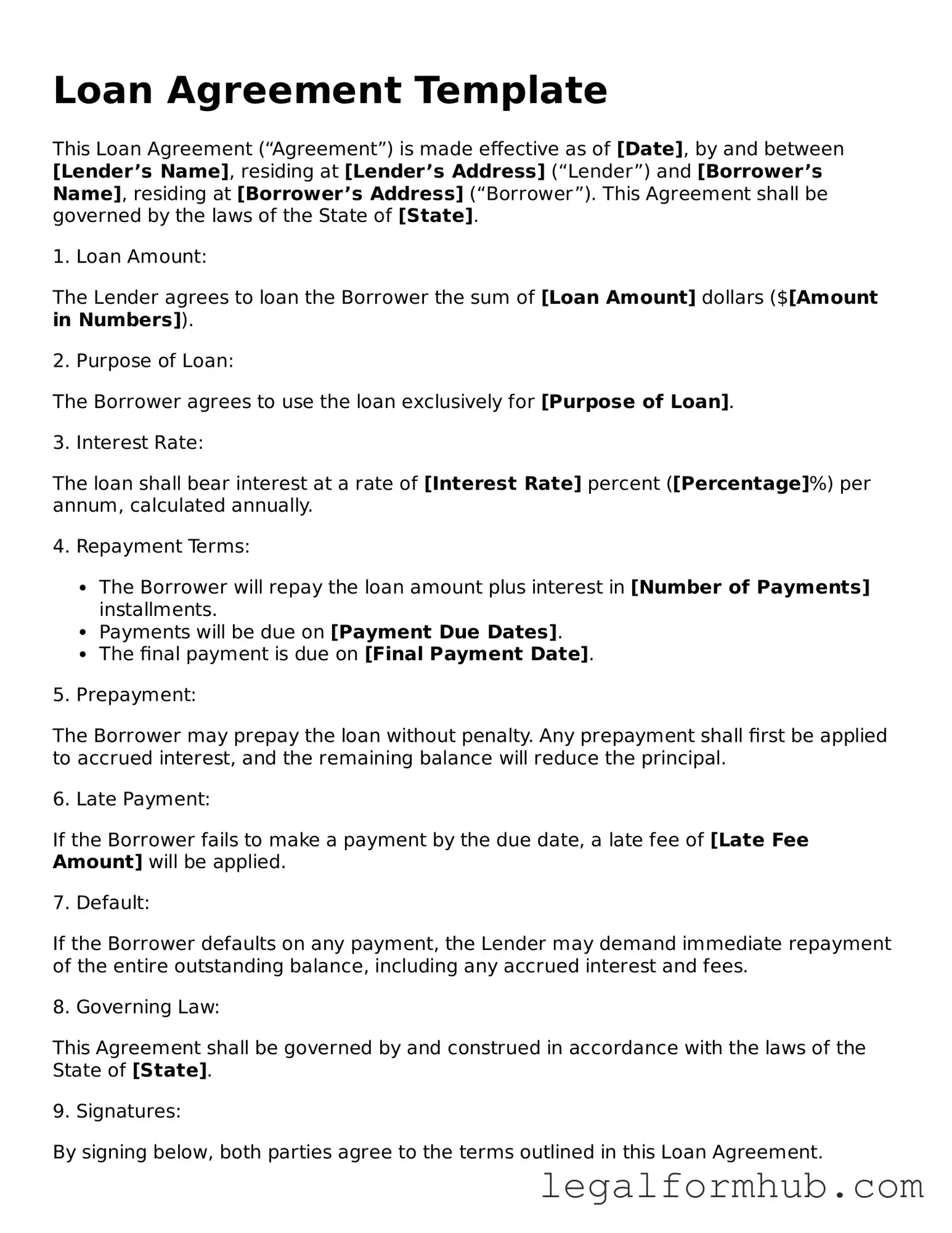A promissory note is a financial document that outlines a promise to pay a specified amount of money to a lender at a designated time. Similar to a Loan Agreement, it includes essential details such as the loan amount, interest rate, and repayment schedule. However, while a Loan Agreement may cover broader terms and conditions, a promissory note is often more straightforward and focuses primarily on the borrower's commitment to repay the loan. Both documents serve to protect the lender's interests, but the promissory note is typically shorter and less detailed.
A mortgage agreement is another document closely related to a Loan Agreement, particularly in real estate transactions. This type of agreement secures a loan with the property being purchased as collateral. Like a Loan Agreement, it details the terms of the loan, including the amount borrowed, interest rate, and repayment terms. However, a mortgage agreement specifically addresses the rights and responsibilities of both the borrower and lender concerning the property. If the borrower defaults, the lender has the right to foreclose on the property, which is a significant distinction from a standard Loan Agreement.
A credit agreement, often used in business financing, shares similarities with a Loan Agreement in that it outlines the terms under which a borrower can access funds from a lender. It specifies the credit limit, interest rates, and repayment terms. While a Loan Agreement typically involves a specific loan amount with a fixed repayment schedule, a credit agreement may allow for ongoing borrowing and repayment, making it more flexible. Both documents aim to establish clear expectations for repayment and protect the interests of the lender.
An installment agreement is another document that bears resemblance to a Loan Agreement. This type of agreement outlines the terms under which a borrower agrees to repay a loan in regular installments over a specified period. Like a Loan Agreement, it includes the loan amount, interest rate, and payment schedule. The key difference lies in the structure of repayment; an installment agreement often breaks down payments into smaller, more manageable amounts, making it easier for borrowers to budget their finances.
In addition to the legal agreements that facilitate financial transactions, it is essential to consider other critical documents, such as a Colorado Power of Attorney form, which provides the principal the ability to authorize someone to act on their behalf. This important legal document allows for decision-making in financial or health-related matters when the principal is unable to communicate directly. For more information, you can refer to the POA.
A lease agreement can also be compared to a Loan Agreement, particularly when it comes to financing equipment or property. While a Loan Agreement involves borrowing money, a lease agreement allows a borrower to use an asset for a specified period in exchange for regular payments. Both documents outline the terms of the financial arrangement, including payment amounts and durations. However, a lease agreement typically does not transfer ownership of the asset to the lessee, whereas a Loan Agreement usually culminates in ownership of the financed item upon repayment.
Finally, a partnership agreement may resemble a Loan Agreement in the context of financing a business venture. This document outlines the terms of a partnership, including the contributions of each partner and how profits and losses will be shared. Similar to a Loan Agreement, it establishes clear expectations and responsibilities among the parties involved. However, while a Loan Agreement focuses on borrowing and repayment, a partnership agreement emphasizes collaboration and the sharing of resources, making it distinct in its purpose and structure.
